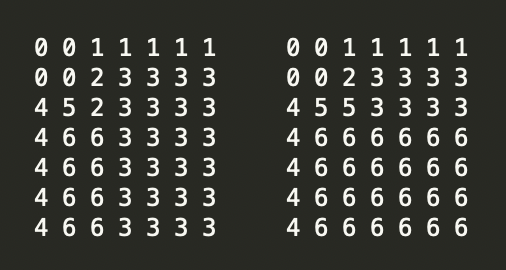

Dividing a Square into 7 Similar Rectangles | Azimuth
source link: https://johncarlosbaez.wordpress.com/2023/03/06/dividing-a-square-into-7-similar-rectangles/
Go to the source link to view the article. You can view the picture content, updated content and better typesetting reading experience. If the link is broken, please click the button below to view the snapshot at that time.

Dividing a Square into 7 Similar Rectangles
This is a continuation of my post Dividing a square into similar rectangles, in which I discussed this puzzle: if you partition a square into n similar rectangles, what proportions can these rectangles have?
Some people on Mathstodon put a lot of work into this and made some nice progress. But there’s been a surprising new twist, and I’m not even talking about the fact that the New York Times ran an article about this puzzle:
• Siobhan Roberts, The quest to find rectangles in a square, New York Times, February 7, 2023. Open-access version here.
Remember the story so far. When n = 3 there are just 3 options for what the proportions of the rectangles can be:

I asked folks on Mathstodon about the case n = 4 and they found 11 options, as drawn here by Dan Piker:

From then on the number increases steeply. The biggest case anyone has been able to handle is n = 7. Ian Henderson found 1371 options in that case:
And that was great… but now the story has gotten more interesting, because Daniel Gerbet seems to have found one more! Yes: not 1371, but 1372.
He did the computation twice, in two different ways. He sent me a table listing all 1372 allowed proportions in increasing order, together with the polynomial equations they obey and pictures of the subdivided square. He wrote:
After running the computation again, I was able to identify the possibly missing guy exactly: the 1055th ratio. The pictures of the partitions look all the same for smaller and larger ratios in the tables from Ian Henderson and the one I computed. You find it at page 106 in the tabletable for partitions with 7 rectangles.
The ratio is the only real root of the polynomial
You can find a picture of a partition with this ratio in the files attached. Note that Ian Henderson has computed partitions with other ratios, but the same topology as this one, e.g. the 1022th ratio.
Indeed it’s an interesting fact, first noted by Lisanne Taams in a simpler example, that we can get two partitions with the same topology where the rectangles have different proportions!
Here is a picture of the apparently new partition that Daniel Gerbet has found:

You can also see it as the 1055th partition in this list, where the 1372 partitions are conveniently grouped into 25 groups of 54, plus 22 more:


























I said “conveniently”, but of course I was kidding—it’s easier to deal with these pictures in a PDF file. Daniel Gerbet has kindly allowed me to share his PDFs for all the interesting cases up to n = 7:
• All 3 allowed proportions for 3 similar rectangles that subdivide the square.
• All 11 allowed proportions for 4 similar rectangles that subdivide the square.
• All 51 allowed proportions for 5 similar rectangles that subdivide the square.
• All 245 allowed proportions for 6 similar rectangles that subdivide the square.
• All 1372 allowed proportions for 7 similar rectangles that subdivide the square. Also, don’t forget the more detailed table listing the polynomials obeyed by these proportions.
You can also get a copy of the Python program that Daniel Gerbet used to obtain his results.
By the way, when I mentioned this news to my friend Todd Trimble he instantly noticed that 1372 is divisible by 7. Coincidence? Probably.
Some good news here is that Daniel Gerbet’s work confirms the previous calculations for n ≤ 6. And that’s especially good because previously only one person, Ian Henderson, had done the n = 6 case. See my previous article for details).
But we need some people to help settle the case n = 7!
Addendum: Greg Egan has confirmed this new solution is real. Ian Henderson has confirmed that it’s new, and he’s found the bug in his program that made him overlook it:
It is real! I made a mistaken assumption in my code to try to save computation time — instead of trying every way of orienting the N rectangles, it always orients the last rectangle the same way, under the assumption that the same arrangement but flipped will be generated anyway.
The issue is that “last” is in the order the rectangles are visited, which may change when the square is flipped! (See attached image for the arrangement here—the last rectangle is #6:

Either changing it to always orient the first rectangle in the same way (since it’s always in the top left) or just disabling that code entirely does give a total count of 1372.
This entry was posted on Monday, March 6th, 2023 at 10:10 pm and is filed under mathematics. You can follow any responses to this entry through the RSS 2.0 feed. You can leave a response, or trackback from your own site.
Post navigation
« Previous PostYou can use Markdown or HTML in your comments. You can also use LaTeX, like this: $latex E = m c^2 $. The word 'latex' comes right after the first dollar sign, with a space after it. Cancel reply
This site uses Akismet to reduce spam. Learn how your comment data is processed.
Recommend
About Joyk
Aggregate valuable and interesting links.
Joyk means Joy of geeK
